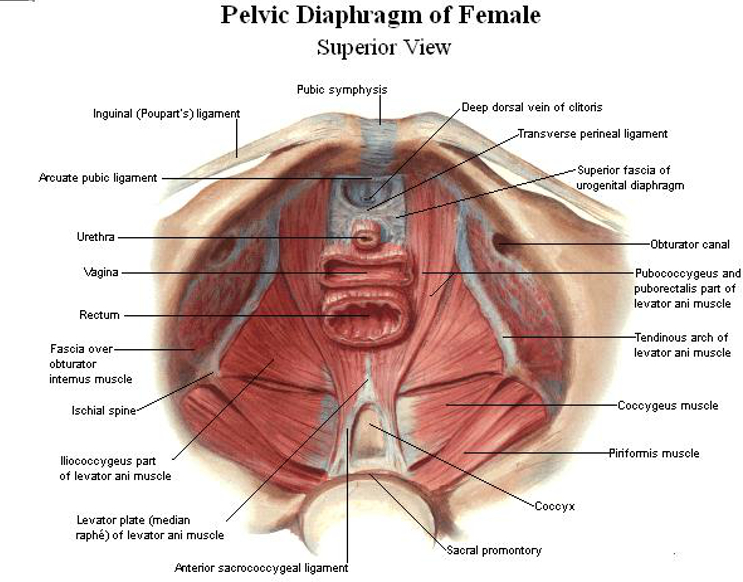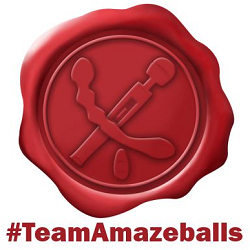 Pelvic floor dysfunction (PFD) includes a group of disorders causing abnormalities of the pelvic floor. It does not discriminate against gender or sexual orientation, however it has a tendency to play favorites. It’s predominate diagnosis is for someone with a vagina, but penis owners can and do suffer this dysfunction as well. I will be addressing owners of a vagina in this post. If you are the owner of a penis and have questions, please reach out to me via Twitter @afterrdarkk or email through my blog. It is a long standing and very frustrating problem.
Pelvic floor dysfunction (PFD) includes a group of disorders causing abnormalities of the pelvic floor. It does not discriminate against gender or sexual orientation, however it has a tendency to play favorites. It’s predominate diagnosis is for someone with a vagina, but penis owners can and do suffer this dysfunction as well. I will be addressing owners of a vagina in this post. If you are the owner of a penis and have questions, please reach out to me via Twitter @afterrdarkk or email through my blog. It is a long standing and very frustrating problem.
What Is The Pelvic Floor?
The pelvic floor is a group of muscles in the pelvic region. Their only job is to support the organs in your bladder, uterus (women), prostate (men), and rectum (the area at the end of the large intestine where your body stores solid waste) like a sling.
What Does It Do?
The pelvic floor is large and in charge of the most important bodily functions. Need to pee? Need too poo? Want to orgasm? You need a healthy pelvic floor to be able to do those, or not do those, as you wish. By contracting and relaxing these muscles, you control your bowel and bladder movements and orgasms.
The Highway To Hell
The levator ani muscle is the Interstate, or major highway if you will. That’s the big boss, applesauce of your pelvic floor. The levator ani muscle is more than one muscle. It’s paired symmetrically in sheets. The iliococcygeus, pubococcygeus, and puborectalis are the exits, or off ramps of the highway. The puborectalis is a U-shaped muscle that attaches to the pubic tubercle1. All of these muscles connect to other back roads, detours and no man’s land, i.e., hamstring and glutes to name a few. This highway runs North and South, hot and cold and there’s always a traffic jam even if you’re just just relaxing in your favorite overstuffed recliner.

Source: http://www.mfi-therapy.com/period-pains-cramps-infrequency/
The pelvic floor is always active. There’s residual exercise to the pelvic floor in everything you do from bending over to get something out of the crisper in your refrigerator to stretching to reach something high above your head. It doesn’t get any rest. If it did, everyone would be bedwetters or be wearing diapers, and toilets would be a thing of the past. That’s a slight exaggeration, but I’m hoping to have made my point without scaring anyone needlessly. The pelvic floor is a busy little bee.
That’s what it is and that’s what it does. Where does the dysfunction come into play? A person suffers from either hypertonicity or hypotonicity. I’m really sorry about the medical terminology, but distinction in diagnosis is imperative to understand because the treatments vary.
Hypotonicity is a disorder with a primary presence of incontinence. For the record, that is not part of aging. It’s a health condition that can be treated. Your bladder can empty if you jog, jump on a trampoline, laugh too hard, or even cough too hard2. I’m the exact opposite. I’m hypertonic3. I have no voluntary muscle relaxation below the waist. None. Zero. Zip. Diddly. Nada. Zilch.
A Body In Broken Pieces
How do I live with this? It doesn’t involve any fun and games. If I want to empty my bladder, I have to use a catheter. In the very near future, I’m hoping to be the recipient of a bladder pacemaker. I don’t eat very many solid foods. I don’t have sex of any type. I have a constant pain in my left ass cheek. I fall flat on my face when my muscles are locked so tight I can’t even move my left leg. I’m probably bitching too much, but I am not exaggerating in the least.
My pelvic floor dysfunction is the result of years of vaginal and pelvic trauma. You can read the full story here. No one could have reasonably expected my current condition as a result. For me, this is permanent, but it’s very rare that it can’t be treated and corrected with very specific exercises to increase blood flow and internal physical therapy with a therapist who specializes in pelvic floor health.
I have had physical therapy for over a year and I’ve had trigger point injections into my levator ani. It’s basically a shot through your vagina into your butt cheek. That procedure brings a whole new meaning to pain, but it is beneficial.
Please feel free to ask questions in the comments section about pelvic health or vaginal health. If I don’t know the answer, I have a Obstetrician – Gynecologist who contributes to my blog. You can also ask him your questions directly and he will answer as time allows. Make sure to subscribe to afterrdarkk.com to follow my journey. In the very near future I’ll be discussing the benefits and consequences of Kegel exercises and devices.
I’d like to thank #ThatsNotAVagina for giving me the opportunity to tell my story and provide readers with education about a rarely discussed dysfunction. Be on the lookout for my next guest post. I’ll be reviewing a Womanizer4 for #TeamAmazeballs.
- A small palpable projection at the anterior extremity of the crest of the pubis about 2 cm from the symphysis; site of insertion of the inguinal ligament. Or, part of the pubic bone. ↩
- https://www.ncbi.nlm.nih.gov/pmc/articles/PMC3411204/ ↩
- https://www.ncbi.nlm.nih.gov/pmc/articles/PMC3498251/#sec2title ↩
- Which will be featured on Toy Meets Girl ↩

